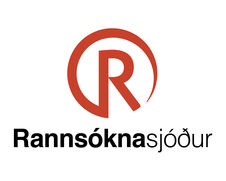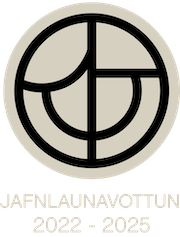Útbreiðsla hafíss í Íslands-Noregshafi á Síð-Kvarter - verkefni lokið
Fréttatilkynning verkefnisstjóra
Doktorsverkefnið fjallar um loftslagsbreytingar á síðari hluta Ísaldar með áherslu á hafísþekju, hafstrauma og jöklabreytingar á Norðurhveli síðustu 165 þúsund ár.
Aldursgreiningar eru byggðar á geislakolsmælingum og sveiflum í súrefnissamsætum. Gögn eru fengin úr borkjörnum úr djúpsjávarseti norðan og austan við Ísland. Í sjávarsetkjörnum varðveitast fjölmargir umhverfisvísar sem notaðar eru til túlkunar á ástandi sjávar svo sem hitastigi, seltu, lífrænni framleiðni, byggt á t.a.m. götungum, súrefnissamsætum, ísbornu efni og frumefnamælingum. Tveir sjávarsetkjarnar (IS-4 og IS-1) eru rannsakaðir með það að markmiði að greina og telja hafísborin setkorn, sem veita upplýsingar um t.d. flutningsleiðir borgarísjaka og lagnaðaríss, sem endurspeglar fornhafstrauma og hafísútbreiðslu. Einnig eru súrefnissamsætur mældar, svifgötungar taldir og greindir til tegunda, og frumefnagögn notuð til samanburðar á birtum niðurstöðum um loftslag. Sjávarsetkjarnarnir spanna allt síðasta jökulskeið (Weichsel), lok þess og hlýskeiðið þar á undan (Eem). Niðurstöður sýna mikinn mun á ísbornu efni sem barst frá næstsíðasta jökulskeiði (Saale), samanborið við síðasta jökulskeið, einnig að ísborna efnið eigi uppruna sinn að mestu frá Grænlandi.
English:
Detailed information on past climate and oceanographic changes are stored within the sediments on the ocean floor. Various proxies from marine sediments are used to decipher paleoenvironmental conditions. In this study two cores from the Iceland-Norwegian sea (IS-4 and IS-1) have been investigated for palaeoceanographic and climate changes. The main focus is on IRD, which provides information on e.g. past iceberg trajectories, ocean currents and sea ice coverage. Additional investigated proxies were oxygen isotopes, foraminifera, element proxy data and lithology. The sediment cores IS-4 and IS-1 span the last 165,000 years, a time period covering more than a full glacial-interglacial cycle. The results from this study show high variability in IRD composition during the penultimate glaciation compared to the last glacial maximum (LGM) and high amplitude variations in IRD flux and ocean temperature with a strong correlation between the two.
The overarching goal of the project is to gather quantitative and qualitative information on changes in the ocean-climate system under very different environmental settings (glacial vs interglacial) with the aim to get a better understanding of the Earth System in the past and in future. To do this we use evidence (such as fossils and types of grains) that have accumulated on the ocean floor for hundreds of thousands of years. Interestingly the results show that there is a difference in the evidence or environmental signal between the last two glaciations, where the former shows much more variability or extremes. These results are very important to help us to understand the Earth System, and particularly understand the importance of sea ice in the ocean-climate system. Results from the project can be utilized to model future climatic- and oceanographic scenarios in the Northern Hemisphere.
∙ Information on how the results will be applied
The results of the first two papers can be used for future ocean current models as well as climate models in the North Atlantic. They will also add new data points produced by the age models and tephrochronology in the area, as well as new detailed information on the types of IRD grains at each time, in the oceanic history of the Iceland-Norwegian seas. The third paper will then summarise the results into a climate model of sea ice fluctuations or iceberg rafting forming a detailed reconstruction of glacial/interglacial transitions, together with detailed temperature records based on oxygen isotope chronology. These results will be available for comparison to other climate research in the North Atlantic.
∙ A list of the project’s outputs
The output of the project will be three written scientific papers which will be sent to high impact scientific journals. The first two papers discuss the detailed analysis on cores IS-4 and IS-1 and the third paper will be a comparison of the results from the two IS cores put into the context of climate and oceanic changes in the Iceland-Norwegian seas for the last 165,000 years

Figure 1 Map of the study area, the core locations and the relevant oceanic currents affecting the area.

Figure 2 Results of data analysis from IS-4.The white and grey bars indicate Marine Isotope Stages 1-6. The red bars indicate volcanic eruptions with peak discharge of tephra as the red line. The image shows the most common IRD categories found in IS-4 as well as the XRF data relevant to the results. Planktonic foraminifera data is showed as well as the isotope analysis.
Heiti verkefnis: Útbreiðsla
hafíss í Íslands-Noregshafi á Síð-Kvarter / Reconstructing sea ice in the
Iceland-Norwegian Seas during the Late Quaternary
Verkefnisstjóri: Erna Ósk Arnardóttir, Háskóla Íslands
Tegund styrks: Doktorsnemastyrkur
Styrktímabil: 2020
Fjárhæð styrks kr. 6.630.000
Tilvísunarnúmer Rannís: 206953


